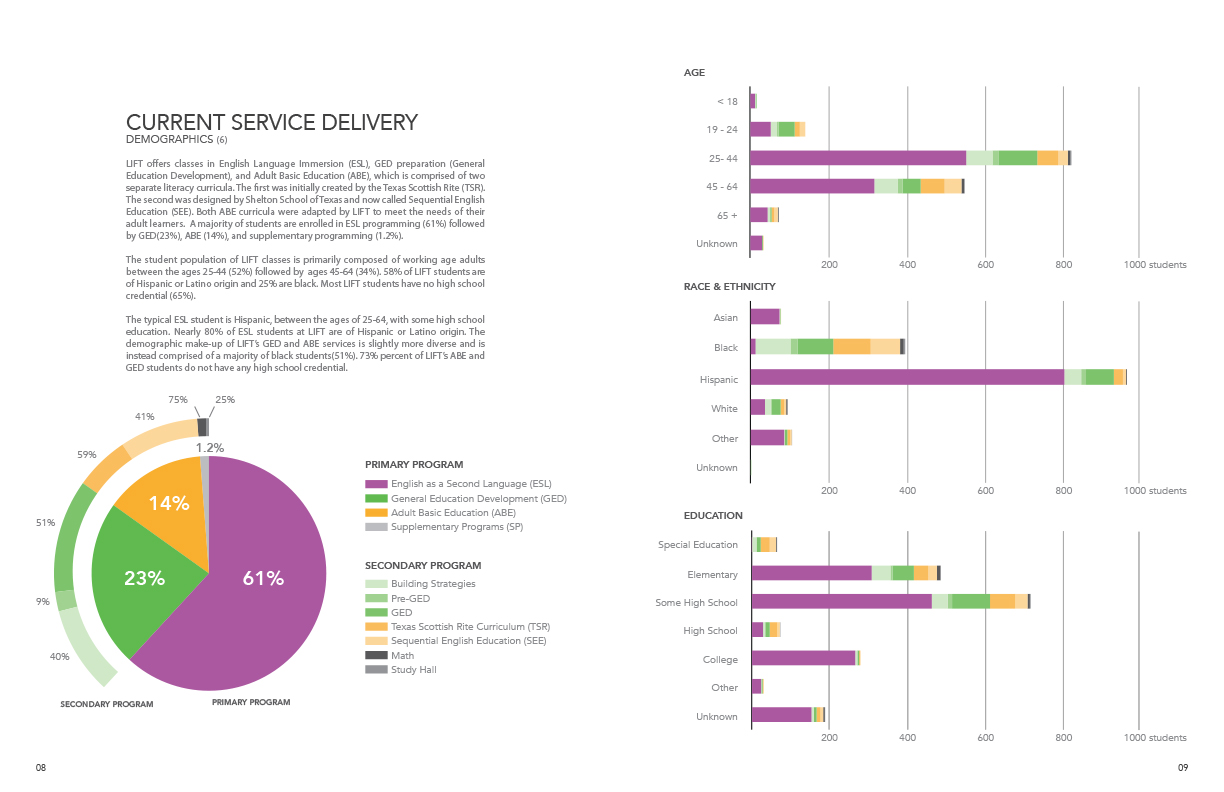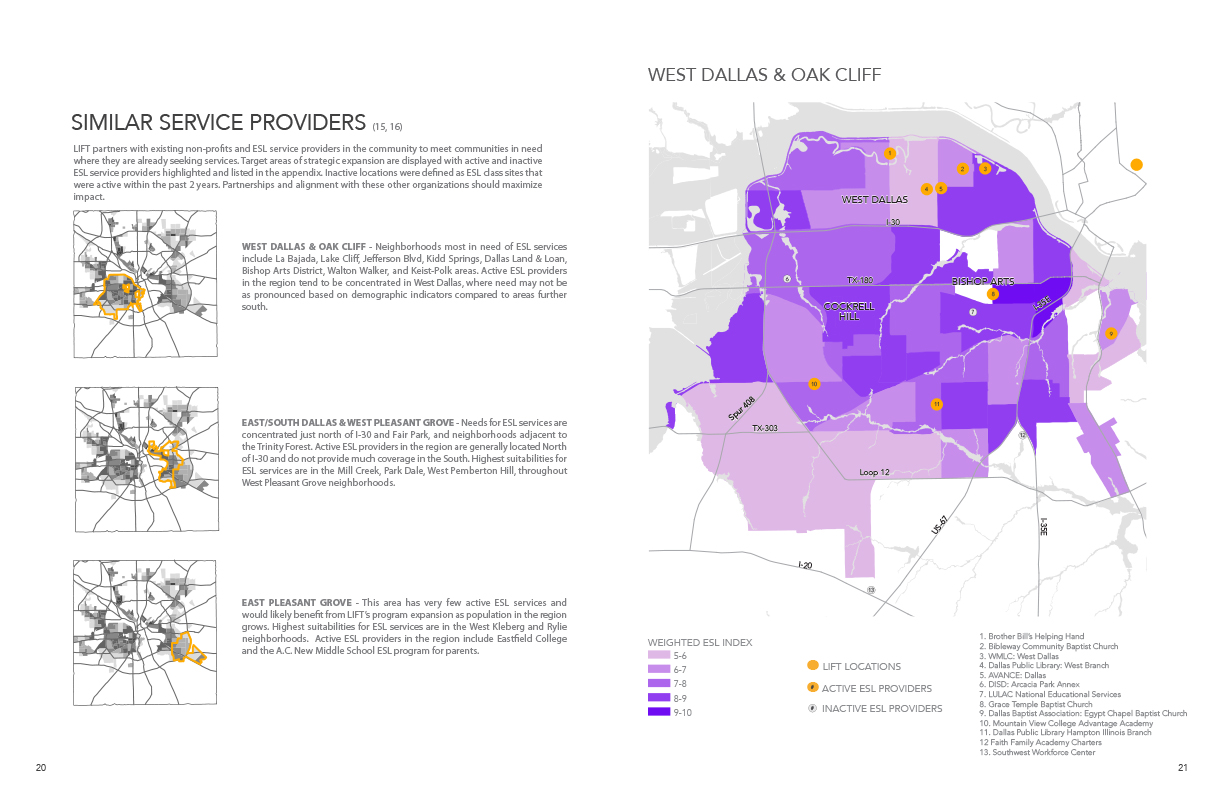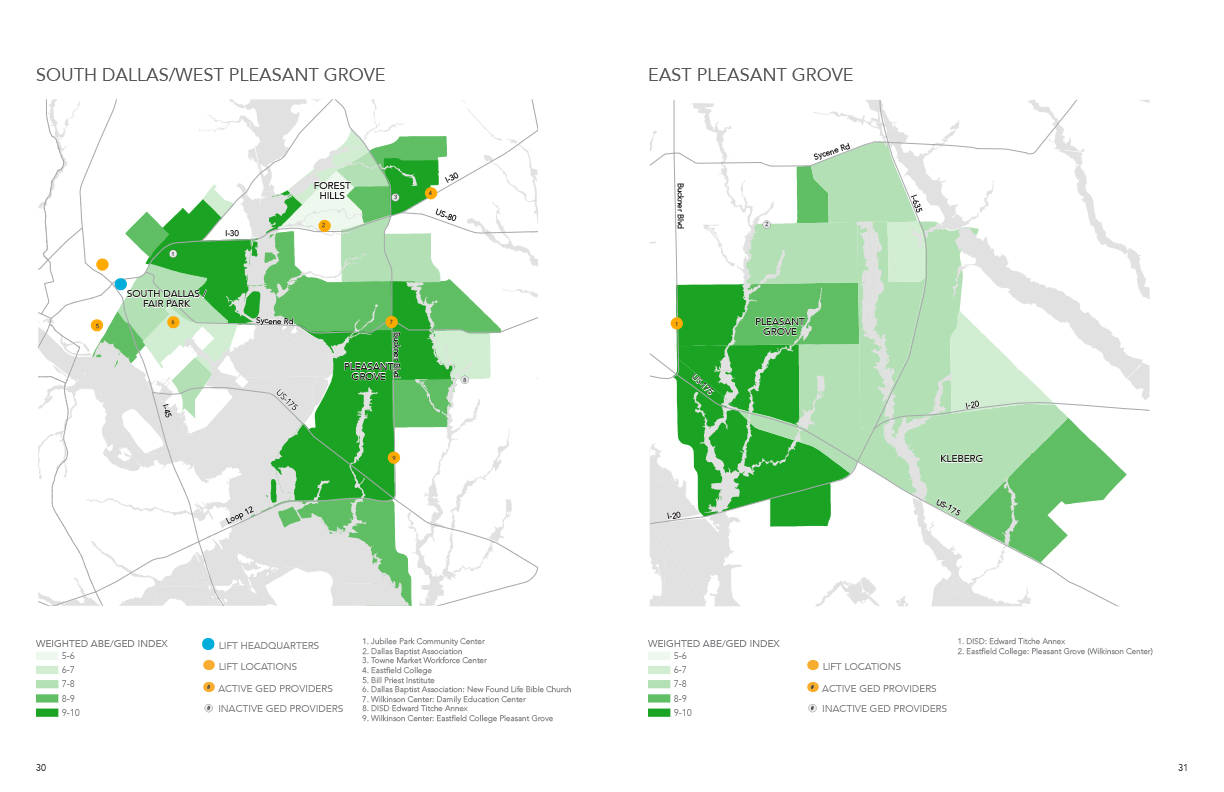Learn about how partnering with students produced a mutually-beneficial learning experience for project partners in our update on the data collaboration in southern Dallas.
Read More2018 State of Dallas Housing Report
Read the full report here!
Learn more about bcANALYTICS and check out the 2016 and 2017 State of Dallas Housing Reports!
We are excited to release the third annual State of Dallas Housing report, the latest in our series of data-driven analytics reports that examine the issue of housing affordability within Dallas and present opportunities for equitable housing development.
The maps and graphics included in the report illustrate longitudinal trends in housing production and new residential construction, as well as growth in population, jobs, and income, across Collin, Dallas, Denton and Tarrant counties. The report looks at median incomes by racial and ethnic group and by industry of employment in relation to average housing costs by Census tract.
The bcANALYTICS team interviewed 10 housing experts in Dallas to determine priority areas where additional research was needed. The need to better understand Dallas’s housing market within the context of the four-county region (Collin, Dallas, Denton, and Tarrant) emerged as a top priority. The report examines key data that demonstrates how Dallas’s housing market is not producing enough affordable housing to meet the needs of its socioeconomically diverse population. With costs of housing on the rise, the housing products on the Dallas market—and the regional market—are increasingly out of reach for many. Moving to surrounding communities does not, according to the study, provide a viable option for finding more affordable housing.
With the City of Dallas adopting a new Comprehensive Housing Policy, Dallas’s residents and stakeholders will need additional metrics and context to understand the issue of housing affordability at the city-wide scale. This new report aims to equip our city with the knowledge to be informed advocates for their communities’ interests.
EXECUTIVE SUMMARY
In 2017 North Texas continued to be one of the fastest growing regions in the United States, and one of the top housing markets in the United States. As the City of Dallas’ prepares to implement its recently passed housing policy, aimed at increasing the production of housing units across the city, it is important to understand housing production at a larger scale to pinpoint where new housing units or typologies may be needed at this critical juncture. The 2018 State of Dallas Housing Report explores current housing trends in the City of Dallas and socioeconomic trends across the four most populous counties of North Texas (Collin, Dallas, Denton, and Tarrant) to help contextualize housing production and identify potential challenges and opportunities for improving access to housing for residents of Dallas and North Texas.
The region’s rise in population, new housing, employment, and income exemplifies the uneven nature of development and economic growth across North Texas. Growth in the region is concentrated in specific cities and neighborhoods, while other areas have experienced less measurable change in recent years. Housing production has followed this growth in parts of the region. However, housing production in the city of Dallas has been heavily concentrated in just a few of the Dallas’ nearly 400 neighborhoods despite more widespread growth across Dallas.
This report helps quantify these trends in Dallas’ housing production from 2011 to 2017, contrasting them with socioeconomic changes and housing production across North Texas. Is Dallas’ goal of increasing the production of housing feasible, inclusive, and able to address the needs of all Dallas residents? Central to this report is the focus of housing accessibility and affordability for different income and population groups in Dallas, based on the ratio of housing values to median income. Has new housing production across North Texas provided opportunities for Dallas’ median income households to access housing in surrounding communities? This report suggests the answer is no.
As more of Dallas’ housing production is focused on higher-valued homes, largely in the city’s northern sector, new housing built in North Texas from 2011 to 2016 was largely concentrated in areas that are the least affordable to Dallas’ median income households of color. As the City weighs a new housing policy to stimulate housing production in Dallas it is important to understand both the history of recent housing production in Dallas and the connection between housing production and Dallas’ existing residents.
This report finds that despite large numbers of new housing units built across the region, many Dallas households are only able to easily afford housing in certain parts of North Texas, primarily in Census tracts that are heavily segregated with high poverty and further removed from much of the economic growth in North Texas. Additionally, some of the fastest growing industries in North Texas tend to pay lower wages that create an additional barrier to accessing affordable housing in proximity to jobs and other amenities based. The lack of production of affordable rental units only further enforces the challenge of Dallas’ minority and low income residents from accessing quality affordable housing at the expense of providing luxury housing for more affluent new residents moving to neighborhoods close to Downtown Dallas.
Update: Healing Hands Ministries
Learn more about bcANALYTICS and check out additional reports in the bcANALYTICS Catalog.
In 2014, bcANALYTICS worked with Healing Hands Ministries on a report to help advocate for a new DART bus stop at the intersection of Greenville Ave. and Royal Ln. in Lake Highlands. Over the past several years, Janna Gardner, the founder and CEO of Healing Hands, has worked tirelessly to bring that goal to fruition alongside District 10 Council Member Adam McGough, the AllinD10 Collection Impact initiative, DART, and other community groups.
Thanks to all of that hard work, a new bus stop, which will help Healing Hand’s clients have better access to the clinic by public transportation, has opened on DART’s Route 84.
In our previous work, we found that Healing Hands was located further from public transportation than other low cost or affordable health care options, which proves a challenge for the thousands of low-income families and individuals who receive services from Healing Hands—the nearest stop was roughly ¾-mile away from Healing Hands clinic, while most organizations, as we found, have a stop less than ¼-mile away.
The data and information prepared by [bc], with support from Communities Foundation of Texas, was an important tool in Janna’s effort to provide better public transportation to the families who rely on Healing Hands for health care services.
We celebrate this community victory with Healing Hands Ministries today and will continue to work to equip community leaders with the tools and data analytics services that they need to advocate for positive change.
Read the full report here!
THIS WORK WAS SUPPORTED BY
As the largest community foundation in Texas and one of the largest in the nation, Communities Foundation of Texas (CFT) works with families, companies and nonprofits to strengthen our community through a variety of charitable funds and strategic grantmaking initiatives. The foundation professionally manages more than 900 charitable funds and has awarded more than $1.3 billion in grants since its founding in 1953. Increasing financial stability of working families is one of the two key focus areas of CFT’s community impact funds. To support this area, CFT has launched the Data Driven Decision-Making (D3) Institute. The D3 Institute is designed to provide organizations that offer programs and services for low-income working families the power to accelerate their development of enduring solutions to the social and economic problems facing this population. www.cftexas.org/D3
2017 State of Dallas Housing Report
Learn more about AIM for Dallas and bcANALYTICS, and read the full 2017 State of Dallas Housing Report here.
If you missed the April 25th event, you can watch the presentation and panel discussion here.
Like many cities across America, Dallas struggles with how to provide adequate housing for low, moderate, and middle income households. The city’s history of segregation between the north and south is evident in many ways, as discussed in 2016 State of Dallas Housing. In regards to housing, a 2015 Supreme Court ruling on Fair Housing and the City’s Voluntary Compliance Agreement with The Department of Housing and Urban Development (HUD) have put the City under pressure to address historic segregation through their policies and funding allocations. Are opportunities for housing available to all residents, in the north and south? A holistic analysis of the city’s housing landscape is needed to help better understand current conditions and help shape housing policy to address the needs of Dallas.
The 2017 State of Dallas Housing is just that assessment of Dallas’ housing landscape - its current housing stock, the people that live in the city, activity to construct and sell new homes, and the policies that guide civic and market investments in housing.
Join [bc] for a presentation of the 2017 State of Dallas Housing report followed by a panel discussion on housing affordability in Dallas on Tuesday, April 25th, at 6:30 pm at the Dallas Black Dance Theatre. Panelist include -
Roy Lopez - Community Development Office, U.S. Federal Reserve Bank of Dallas
Bernadette Mitchell - Director of Housing, City of Dallas
Demetria McCain - President, Inclusive Communities Project
Scott Galbraith - Vice President, Matthews Affordable Income Development
Please RSVP here. Light refreshments will be provided.
Executive Summary
The 2017 State of Dallas Housing documents the characteristics of Dallas’ housing landscape - the people who live in the city, the houses they live in, and activity to build or sell homes - and identifies major barriers to accessing adequate housing for many of the city’s 1.3 million residents. In a city that has seen sustained increases in housing costs following the 2008 Recession, it appears that many low- and middle-income Dallasites struggle to find housing that meets their needs, regardless of whether they are looking to rent or own. Dallas’ surprisingly low homeownership rate (43%) continues to sit well below peers across the country, but this varies greatly between northern and southern Dallas as well as between the city’s white and minority households.
Dallas’ North-South divide permeates the report. Differences between households, housing, and market activity represent serious issues facing the city’s population. The city’s minority population is highly concentrated in southern Dallas and live in housing that is older and more affordable, although of varying quality, and those that live in northern Dallas are overwhelmingly renters. Opportunities to find affordable housing are limited in the north, often by economic constraints facing more than a third of the city’s households. Despite this, the local housing market operates at the high end of the income bracket, where homes are built and sold that far exceed the financial realities of most households in the city.
The findings in this report highlight the need for adjustments in public policy and reveal inefficiencies in the current marketplace. The recommendations of this report speak to those adjustments and inefficiencies, providing a pathway to building a more equitable city:

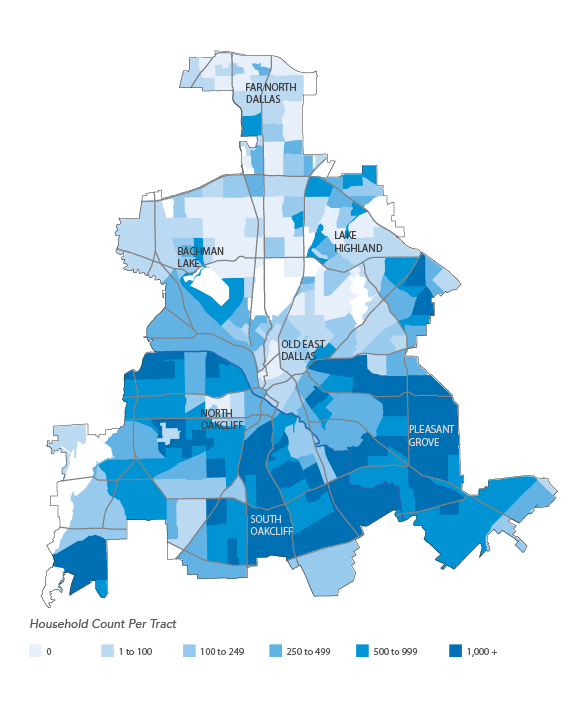


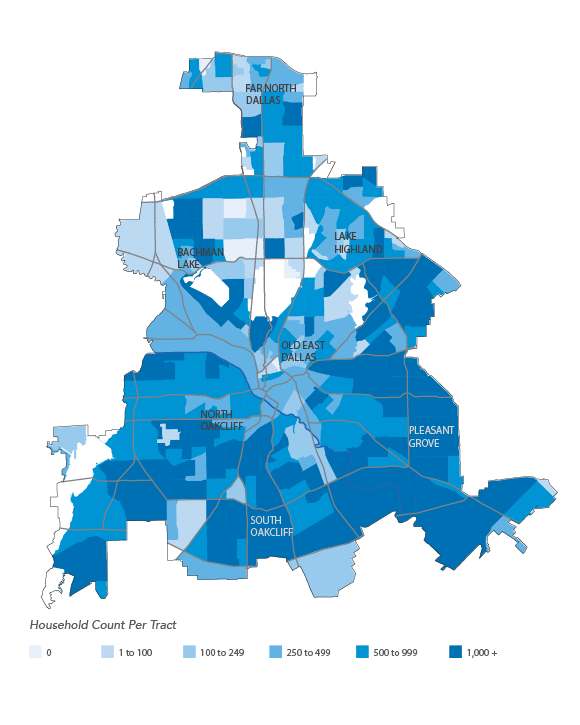

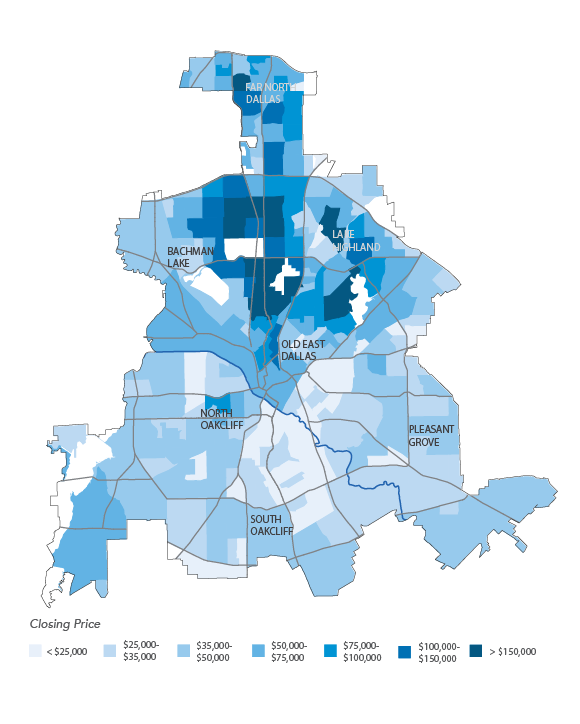

Key Findings
- 68,000 households in Dallas need housing that costs less than $400 per month;
- Homeownership for Dallas’ minority households falls behind rates of white households: 56% of white households are owner-occupied, compared to 31% for black households, 43% for Hispanic households, and 38% for Asian households;
- The median sale price of recently constructed homes rose from $145,00 in 2011 to $522,000 in 2016;
- 32% of homes in southern Dallas are valued less than $50,000, which represents just 6% of northern Dallas houses.
Recommendations
- The City of Dallas should undertake a thorough review of its Land Bank program;
- Innovative programs that promote housing affordability should be adopted by the City;
- Public/Private partnerships to expand market-rate affordable housing for middle-income homebuyers are needed across the City;
- Local homebuilders should explore opportunities for infill development of housing products that address the needs of low- and middle-income households identified in the report;
- The City should seek to further Fair Housing through all funding allocations, including HUD funding for single family ownership.
Healing Hands Ministries
We are publishing a collection of reports and documents prepared by bcANALYTICS to help nonprofit and community-based organizations serve their clients and communities through data-driven research and analysis. Check out more bcANALYTICS reports here.
EXECUTIVE SUMMARY
Four of the primary challenges that negatively impact the health of Americans are:
(1) The high cost of healthcare
(2) The high rate of uninsured
(3) The high rate of poverty
(4) Poor transportation access to care
By providing affordable healthcare to thousands of uninsured patients earning at or below 200% of the poverty level, Healing Hands Ministries effectively and compassionately remediates three of these challenges for people in the Lake Highlands and greater Dallas area.
Currently, however, Healing Hands Ministries is underserved by public transportation, and patients seeking to use their facilities must walk more than one-half mile from the nearest bus stops along inhospitable and fast-moving arterial roads. To more effectively serve a greater population in need, Healing Hands Ministries must be better connected to the Dallas Area Rapid Transit system.
This report will argue for enhanced transportation access for Healing Hands Ministries by drawing attention to the heightened significance of their service provision due to the severe need for quality, affordable healthcare in Dallas; demonstrating the breadth of scope and quality of care Healing Hands provides patients; revealing the inadequacy of transportation connectivity surrounding the intersection of Greenville Avenue and Royal Lane; and recommending several paths forward for pursuing improved integration into the Dallas Area Rapid Transit transportation system.
Below is an excerpt from the Healing Hands report. Read the full report here!
THIS WORK IS SUPPORTED BY
As the largest community foundation in Texas and one of the largest in the nation, Communities Foundation of Texas (CFT) works with families, companies and nonprofits to strengthen our community through a variety of charitable funds and strategic grantmaking initiatives. The foundation professionally manages more than 900 charitable funds and has awarded more than $1.3 billion in grants since its founding in 1953. Increasing financial stability of working families is one of the two key focus areas of CFT’s community impact funds. To support this area, CFT has launched the Data Driven Decision-Making (D3) Institute. The D3 Institute is designed to provide organizations that offer programs and services for low-income working families the power to accelerate their development of enduring solutions to the social and economic problems facing this population. www.cftexas.org/D3
bcANALYTICS Catalog Launch
See more posts about bcANALYTICS here!
Do you want to learn more about bcANALYTICS? Visit the bcANALYTICS Catalog to see a few of the reports completed by the bcANALYTICS team. Reports from the past few years will be added to the catalog in the coming months, and new reports will be added when ready.
YWCA of Metropolitan Dallas
We are publishing a collection of reports and documents prepared by bcANALYTICS to help nonprofit and community-based organizations serve their clients and communities through data-driven research and analysis. Check out more bcANALYTICS reports here.
INTRODUCTION
The YWCA of Metropolitan Dallas (YW) is moving from operating as a virtual organization with dispersed services to opening the YW Women’s Center Ebby’s Place located at 2603 Inwood Road in Dallas, increasing its public presence and ability to offer wrap-around services. As YW prepares for this shift, the organization is considering how to sustain its current clients, how existing and new clients access the Center, and opportunities for outreach and programming to neighborhoods and organizations nearby.
This study provides contextual data on low-income women and families and the difficulty of making ends meet, local data on YW’s target clientele, visualization of YW’s current service delivery, and information on the neighborhoods, resources, and transit access near the new YW Women’s Center. The goal of this report is to aid YW in informed decision-making on their outreach and service delivery as they work to guide women toward self sufficiency.
Below is an excerpt from the YWCA report. Read the full report here!
THIS WORK IS SUPPORTED BY
As the largest community foundation in Texas and one of the largest in the nation, Communities Foundation of Texas (CFT) works with families, companies and nonprofits to strengthen our community through a variety of charitable funds and strategic grantmaking initiatives. The foundation professionally manages more than 900 charitable funds and has awarded more than $1.3 billion in grants since its founding in 1953. Increasing financial stability of working families is one of the two key focus areas of CFT’s community impact funds. To support this area, CFT has launched the Data Driven Decision-Making (D3) Institute. The D3 Institute is designed to provide organizations that offer programs and services for low-income working families the power to accelerate their development of enduring solutions to the social and economic problems facing this population. www.cftexas.org/D3
Literacy Instruction for Texas
We are publishing a collection of reports and documents prepared by bcANALYTICS to help nonprofit and community-based organizations serve their clients and communities through data-driven research and analysis. Check out more bcANALYTICS reports here.
EXECUTIVE SUMMARY
Through research and analysis, [bc] has mapped and profiled Literacy Instruction for Texas’ (LIFT) current service delivery and identified key demographic factors commonly associated with low literacy populations. This report offers recommendations to guide LIFT’s potential expansion in Dallas County.
Currently, LIFT, has 14 outreach locations around the Dallas/Fort Worth area that serve approximately 3,313 individuals, ages 18 to 90, through its various programs. LIFT has served the region for over 50 years.
While much research has been done on childhood literacy, low literacy among adults is largely unstudied. Indicators commonly associated with low literacy rates among adults include poverty, English proficiency, race, ethnicity, immigration, and unemployment. In this study, estimate data from the American Community Survey were used to identify geographies with a prevalence of adult literacy indicators and risk factors. In Dallas County, these include neighborhoods in South Oak Cliff, near Fair Park, and Pleasant Grove. It is recommended that explorations for service expansion start in these neighborhoods.
Social service and ESL adult education providers in and near identified neighborhoods are located and listed. Examples of these include primary and secondary schools with higher prevalence of ESL students, workforce centers, churches, and libraries. It is also recommended that literacy outreach efforts begin at community centers already integrated and engaged within the community. Partnerships and alignment with other organizations should maximize impact in areas with the highest need.
Below is an excerpt from the LIFT report. Read the full report here!
THIS WORK IS SUPPORTED BY
As the largest community foundation in Texas and one of the largest in the nation, Communities Foundation of Texas (CFT) works with families, companies and nonprofits to strengthen our community through a variety of charitable funds and strategic grantmaking initiatives. The foundation professionally manages more than 900 charitable funds and has awarded more than $1.3 billion in grants since its founding in 1953. Increasing financial stability of working families is one of the two key focus areas of CFT’s community impact funds. To support this area, CFT has launched the Data Driven Decision-Making (D3) Institute. The D3 Institute is designed to provide organizations that offer programs and services for low-income working families the power to accelerate their development of enduring solutions to the social and economic problems facing this population. www.cftexas.org/D3
Affordable Housing and Transit Oriented Development
Affordable Housing and Transit Oriented Development, a report on turning underutilized DART owned surface parking lots around rail stations into equitable transit oriented development with affordable housing integrated into the development.
Read MoreData Ecosystem Project - Report Released
See more posts about bcANALYTICS.
Stakeholders from across North Texas identified opportunities and challenges at Data Ecosystem Lab #1 in January 2016.
bcANALYTICS recently wrapped up The Data Ecosystem Project, a two-year project to reimagine the way data is collected, shared, and used across Dallas and North Texas.
Executive Summary
Read the full Data Ecosystem Project report and Appendices here!
North Texas faces a myriad of challenges as it moves through the second decade of the 21st Century. Affordable housing, rapid growth, aging infrastructure, poverty alleviation, children’s health, and urban blight are just some of the many complex, interconnected problems that require an unprecedented amount of long-term action, cross-sector coordination, and development of a common agenda to address. Cities across the world have recognized that data is central to both understanding and acting on these complex issues and that the importance of making data accessible to a greater population is key to reaching these goals. A number of different strategies for achieving these goals have been adopted across the country, with each offering unique strengths and benefits.
The Data Ecosystem Project, sponsored by Communities Foundation of Texas, has worked with a diverse group of stakeholders to identify a system that can revolutionize the ways we collect, share, access, and use data in Dallas. Through research on national best practices, the Dallas Data Ecosystem Survey, and local stakeholder engagement the Data Ecosystem Project has identified an approach that organizations in Dallas and North Texas can work towards to improve the health and vitality of the regional data ecosystem.
The wealth of motivated organizations and individuals already working in Dallas and North Texas lends itself to collaborative solutions that benefit from the existing skills and expertise of the data ecosystem. The single greatest need is a centralized data catalog, library, or portal - where data from a variety of organizations, topics, and scales can be accessed by anyone and everyone. To do this, a mix of ancillary activities must also occur, from the creation of a governing body and governance structure to the development of topic specific cohort groups that encourage collaboration and participation between and across different parts of the ecosystem.
The Data Ecosystem Project has identified a data ecosystem model built around a number of primary and second functions. To implement these practices across the ecosystem, we recommend the following activities take place by Fall 2017:
- Acquiring preliminary funding to carry out a set of initial work items with oversight from a preliminary advisory team.
- Recruiting advocates from a variety of sectors and backgrounds to act as champions of the data ecosystem.
- Forming an advisory team to help guide the development of the data ecosystem’s final structure.
- Conducting a data inventory to better understand the extent of publicly available data in North Texas.
- Developing case studies that help demonstrate the value and potential of enhanced data accessibility.
- Creating a business plan and securing multi-year funding for implementation.
Moving forward with these steps will support the successful implementation of a more robust data ecosystem. Whether the advisory team recommends and builds the case for a collaborative effort or the development of a university-driven data hub, taking the steps to make data more accessible will better enable the region to tackle the problems it faces. By maintaining the status quo, organizations must work harder and less efficiently to understand themselves, their communities, and make well-informed decisions.
Photo Credit: Charlie Kaye Media LLC
State of Dallas Housing, 2016
Housing affordability, the focus of [bc]’s AIM for Dallas program, is a key concern for current residents, stakeholders, and policy makers in Dallas, not to mention future residents that the city hopes to attract. State of Dallas Housing, 2016 argues that to successfully gain and retain homeowners, it is important that Dallas understand affordable housing in terms of markets, policies, and people, each of which impact the choices available to, and made by homebuyers.
Read MoreData Social Hour 3
Learn more about bcANALYTICS!
Join [bc] and other members of Dallas’ data ecosystem on Wednesday, January 20th, 2016 for the 3rd Data Social Hour. This month, we’re looking for 4-5 of our data-inspired peers to give short, 5-minute presentations on a data-related subject of their choosing.
Are you stuck on a project because you can’t find the right data? Do you have a favorite dataset that gets overlooked by others in your field? Do you want to share your love of data visualization with others?
If you answered yes and would liked to share your work with others, fill out this form and tell us what you would like to talk about by January 14th. We’ll let you know if you’re chosen by January 15th and announce our speakers that same day.
Please RSVP if you’re interested in attending. Appetizers and drinks will be provided.
Upcoming Data Social Hours:
Data Social Hour #4: February 17th, 2016
Data Social Hour #5: March 23rd, 2016
Data Social Hour #6: April 20th, 2016
Data Social Hour 2
Learn more about bcANALYTICS.
Join us on Wednesday, December 9th from 6:30-7:30pm for a discussion of neighborhood-level data in Dallas with members of the local data community. Meet others interested in using data to improve their communities and learn more about [bc]'s work defining and embracing the city's many unique neighborhoods.
Appetizers and drinks will be provided.
Data Social Hour
Learn more about bcANALYTICS.
Join us Thursday, November 12th from 6:30-7:30pm for a meet and greet with members of the local data community. Meet others interested in leveraging data to make meaningful changes in our communities and neighborhoods!
Appetizers and drinks will be provided.
CLICK HERE TO RSVP
Geography of Food Security
Learn more about bcANALYTICS
[Note: The data and report presented here are for informational purposes only. This report does not represent the current strategy and operations of CCS.]
Crossroads Community Services (CCS) works to ensure that all people in Dallas County have ready access to nourishing foods and to provide life-skills education to help reduce obesity in impoverished areas. To help serve those in need, CCS participated in the 2013 - 2014 class of the Data Driven Decision-Making (D3) Institute hosted by the Communities Foundation of Texas (CFT). The D3 Institute works to give organizations the skills and tools necessary to incorporate data into their work serving low-income working families.
Following their participation in the D3 Institute, D3 participants were eligible to submit letters of interest to receive an analytics package from bcANALYTICS sponsored by CFT. In their LOI, CCS sought to identify small areas of Dallas County most at risk of food insecurity for possible expansion of their network of Community Distribution Partners (CDPs). bcANALYTICS staff worked with CCS to refine the research needs into a data driven, actionable research question and a work plan to answer the question in three months.
The three month project was split between four main phases – Connect, Discover, Analyze, and Deliver -- in order to perform a literature review, data collection, analysis, and compilation of a final report sharing contextual information and recommendations for CCS’s expansion strategy. This project required a considerable amount of background research on food deserts, food insecurity, and CCS’ client base in order to understand the myriad issues relating to the food landscape in Dallas County.
Ultimately, the report produced estimates of food insecurity at the Census Tract level and used geospatial techniques to identify areas underserved by grocery stores and food pantries. The intersection of food insecurity and food deserts was the starting point in identifying specific neighborhoods in Dallas County where CCS could focus on expanding the CDP network. Five neighborhoods were selected and explored at a more fine-grained level: the Los Encinos and Westhaven neighborhoods in far west Dallas; and parts of Pleasant Grove, Pleasant Mound, and Pemberton Hills in southeast Dallas.
Selected findings from the report:
- 34% of food distributed by CCS to CDP sites flows to southeastern Dallas County.
- Children under 19 make up 31% of the overall population in Dallas County, but this same age group makes up 46% of CCS clients between 2012 and 2014.
- Roughly ¼ of the food insecure population in Dallas County, 133,00 people, live in areas of concentrated food insecurity (Census Tracts with food insecurity rates greater than or equal to 20%).
- Much of Dallas County’s food insecure population live in areas that have low accessibility to grocery stores and food pantries.
Announcing bcANALYTICS
Watch for future posts about bcANALYTICS here.
Overcoming the major economic and social issues in the city that affect the working poor - jobs, housing, health, child care, and more - requires coordinated data gathering and analysis. Currently, Dallas significantly trails behind its peer cities in this work. Access to reliable, intelligible, and current data can reveal, and help coordinate, the related work of local government, non-profit organizations, business, neighborhood groups, universities, and foundations to improve local decision-making for the advancement of social and physical change in the city. Facilitating the use of data by city and community leaders leads to more targeted and thoughtful response strategies to individual issues, in service to comprehensive strategies.
bcANALYTICS, in partnership with the Communities Foundation of Texas, continues to work with nonprofits of the Data Driven Decision-Making Institute (D3) to deliver tailored analytics reports to fit organizational needs. While these reports answer organization-specific questions, they also address issues shared throughout the region and help guide strategic decision-making for many organizations.
The bcANALYTICS team also works to develop a potential model and implementation proposal to guide Dallas’ incubation of a robust effort to use advanced and continuously updated data to target and inform urban issues affecting the working poor. Research on national best practices will inform this work and help situate Dallas within the national context of organizations using data for community benefit. The project will ultimately evaluate how municipal government, universities, non-profit organizations, consulting agencies, foundations, and others might contribute to a model, and will explore possibilities to advance data sharing and access to address key challenges facing the working poor.
bcANALYTICS also supports other research being undertaken at [bc].
![[bc]](http://images.squarespace-cdn.com/content/v1/5248ebd5e4b0240948a6ceff/1412268209242-TTW0GOFNZPDW9PV7QFXD/bcW_square+big.jpg?format=1000w)



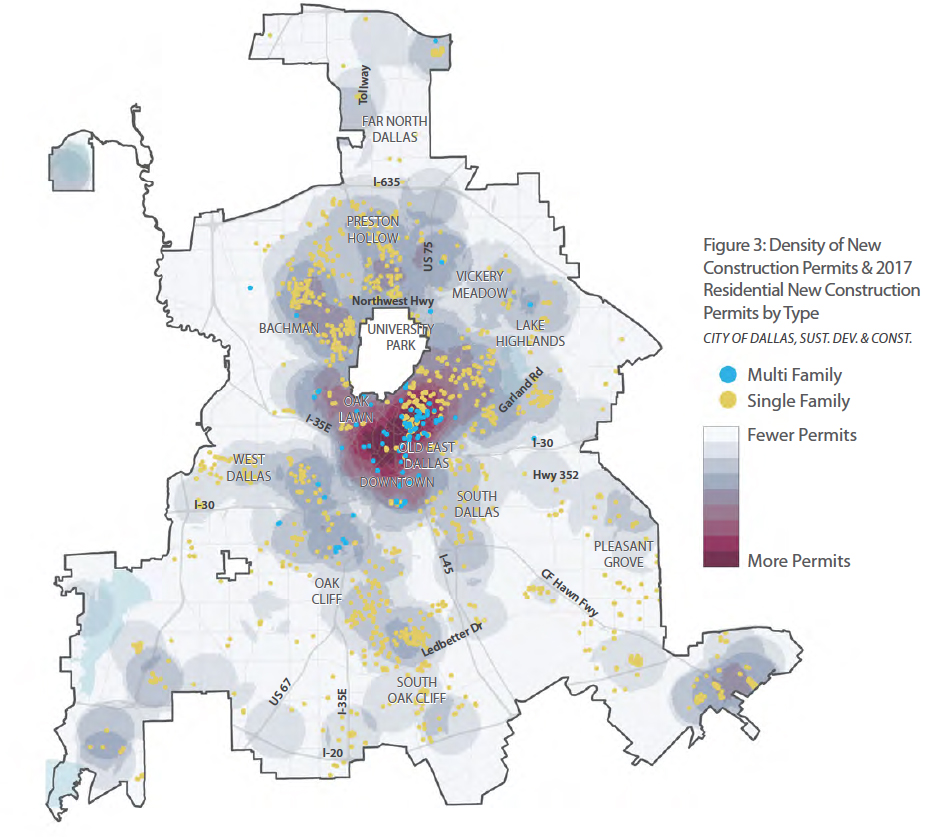
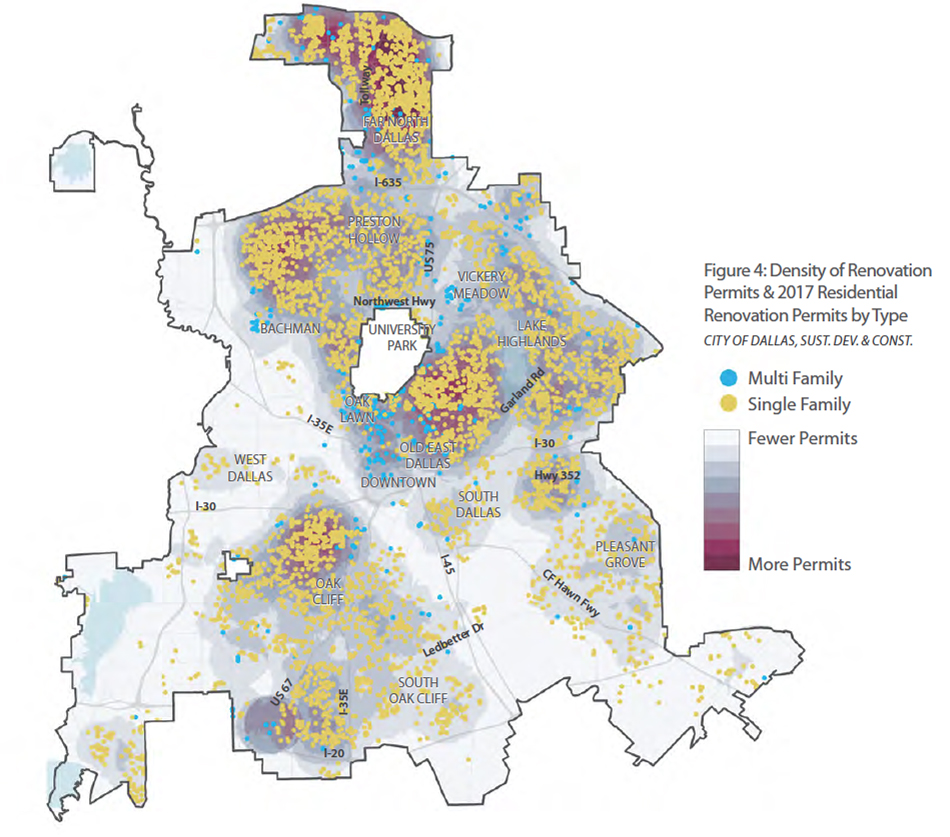
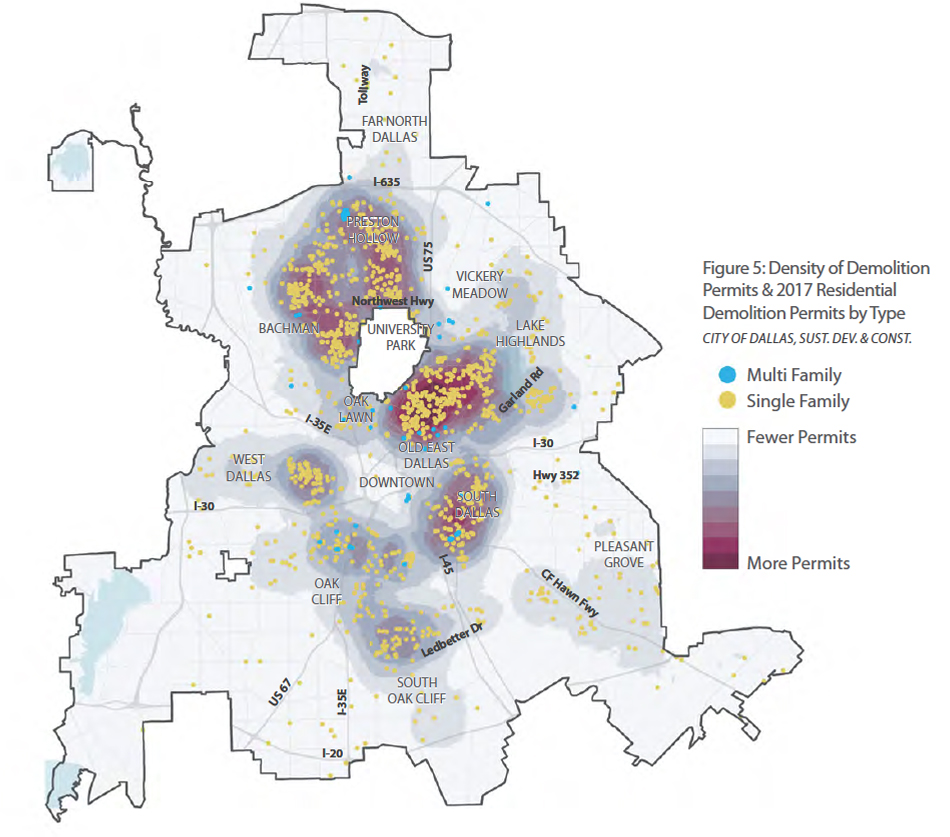






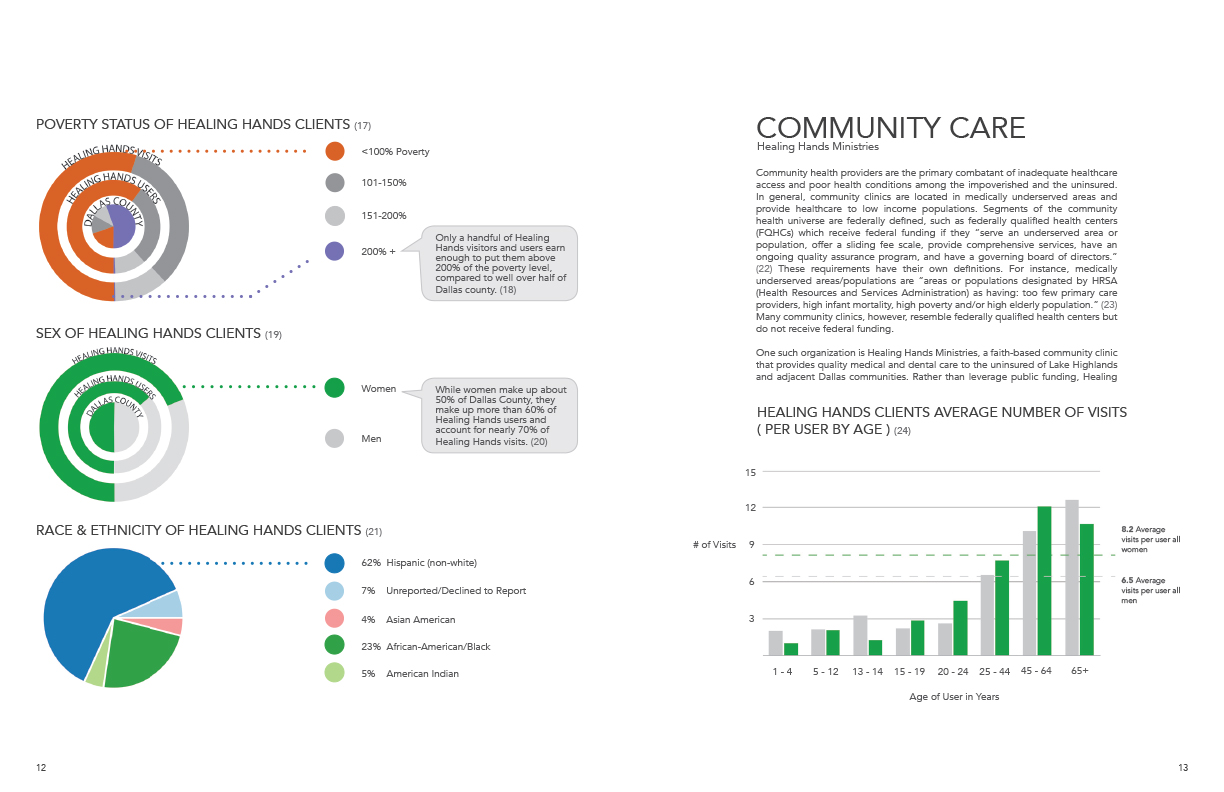




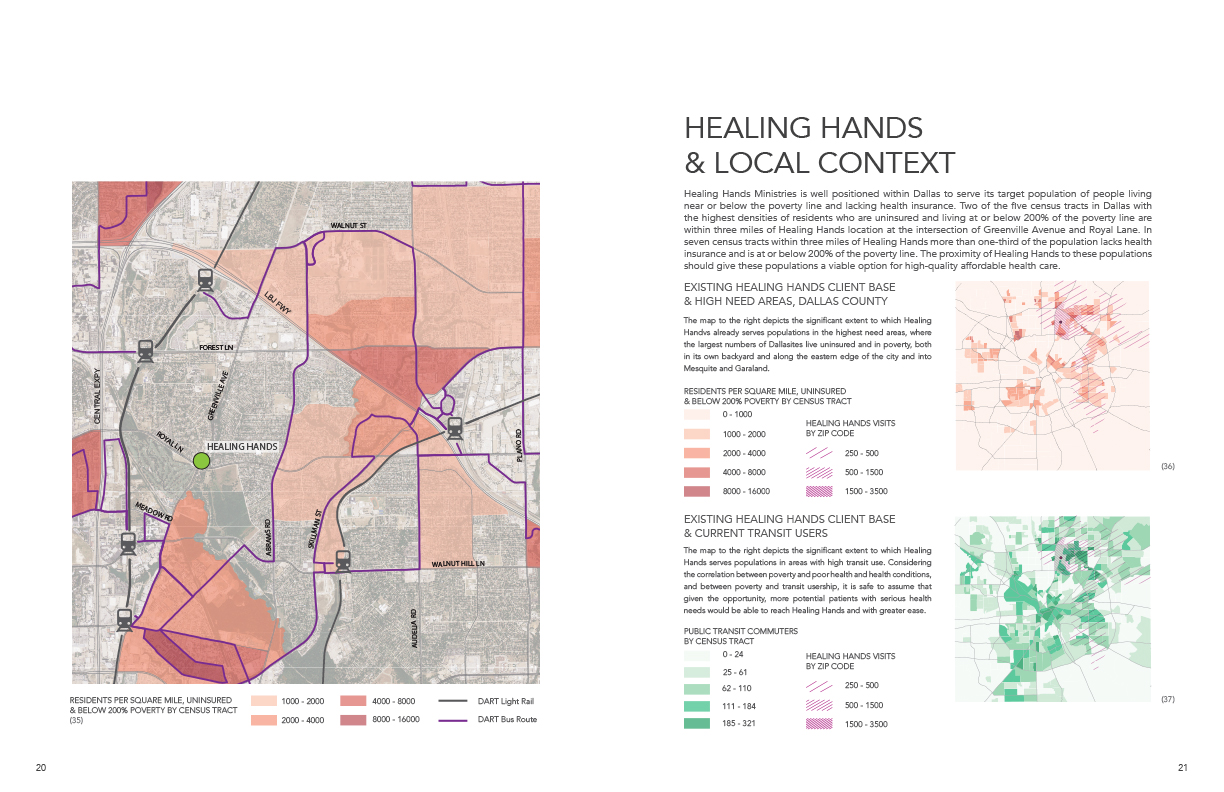



![YW_ bcW Final Report November 2014 [spreads] 4.jpg](https://images.squarespace-cdn.com/content/v1/5248ebd5e4b0240948a6ceff/1474907388729-NBH43IB9HFXB354VEDW0/YW_+bcW+Final+Report+November+2014+%5Bspreads%5D+4.jpg)
![YW_ bcW Final Report November 2014 [spreads] 5.jpg](https://images.squarespace-cdn.com/content/v1/5248ebd5e4b0240948a6ceff/1474907389138-4W9IIK82VYE5O5U8S2YI/YW_+bcW+Final+Report+November+2014+%5Bspreads%5D+5.jpg)
![YW_ bcW Final Report November 2014 [spreads] 6.jpg](https://images.squarespace-cdn.com/content/v1/5248ebd5e4b0240948a6ceff/1474907395839-AYGCJO99IVYT23EM0RBU/YW_+bcW+Final+Report+November+2014+%5Bspreads%5D+6.jpg)
![YW_ bcW Final Report November 2014 [spreads] 7.jpg](https://images.squarespace-cdn.com/content/v1/5248ebd5e4b0240948a6ceff/1474907395870-90IF82AQLG1EZ4MWZ61S/YW_+bcW+Final+Report+November+2014+%5Bspreads%5D+7.jpg)
![YW_ bcW Final Report November 2014 [spreads] 8.jpg](https://images.squarespace-cdn.com/content/v1/5248ebd5e4b0240948a6ceff/1474907403299-FTQNFVVB447PE5PRU9SQ/YW_+bcW+Final+Report+November+2014+%5Bspreads%5D+8.jpg)
![YW_ bcW Final Report November 2014 [spreads] 9.jpg](https://images.squarespace-cdn.com/content/v1/5248ebd5e4b0240948a6ceff/1474907403319-0OSN2ZTV3G274O1MBFRO/YW_+bcW+Final+Report+November+2014+%5Bspreads%5D+9.jpg)
![YW_ bcW Final Report November 2014 [spreads] 10.jpg](https://images.squarespace-cdn.com/content/v1/5248ebd5e4b0240948a6ceff/1474907412744-UN0MCZGNCUR9ZBIVIW87/YW_+bcW+Final+Report+November+2014+%5Bspreads%5D+10.jpg)
![YW_ bcW Final Report November 2014 [spreads] 11.jpg](https://images.squarespace-cdn.com/content/v1/5248ebd5e4b0240948a6ceff/1474907420109-AA4003T0X62SP75AAFMM/YW_+bcW+Final+Report+November+2014+%5Bspreads%5D+11.jpg)
![YW_ bcW Final Report November 2014 [spreads] 12.jpg](https://images.squarespace-cdn.com/content/v1/5248ebd5e4b0240948a6ceff/1474907418731-GRME5ZGJJ5ZGMOA5LAKQ/YW_+bcW+Final+Report+November+2014+%5Bspreads%5D+12.jpg)
![YW_ bcW Final Report November 2014 [spreads] 13.jpg](https://images.squarespace-cdn.com/content/v1/5248ebd5e4b0240948a6ceff/1474907426410-2LT7Y5RY848Y7N4BDN9C/YW_+bcW+Final+Report+November+2014+%5Bspreads%5D+13.jpg)
![YW_ bcW Final Report November 2014 [spreads] 14.jpg](https://images.squarespace-cdn.com/content/v1/5248ebd5e4b0240948a6ceff/1474907424900-Q8922R30L5QQZQKMSWXX/YW_+bcW+Final+Report+November+2014+%5Bspreads%5D+14.jpg)

